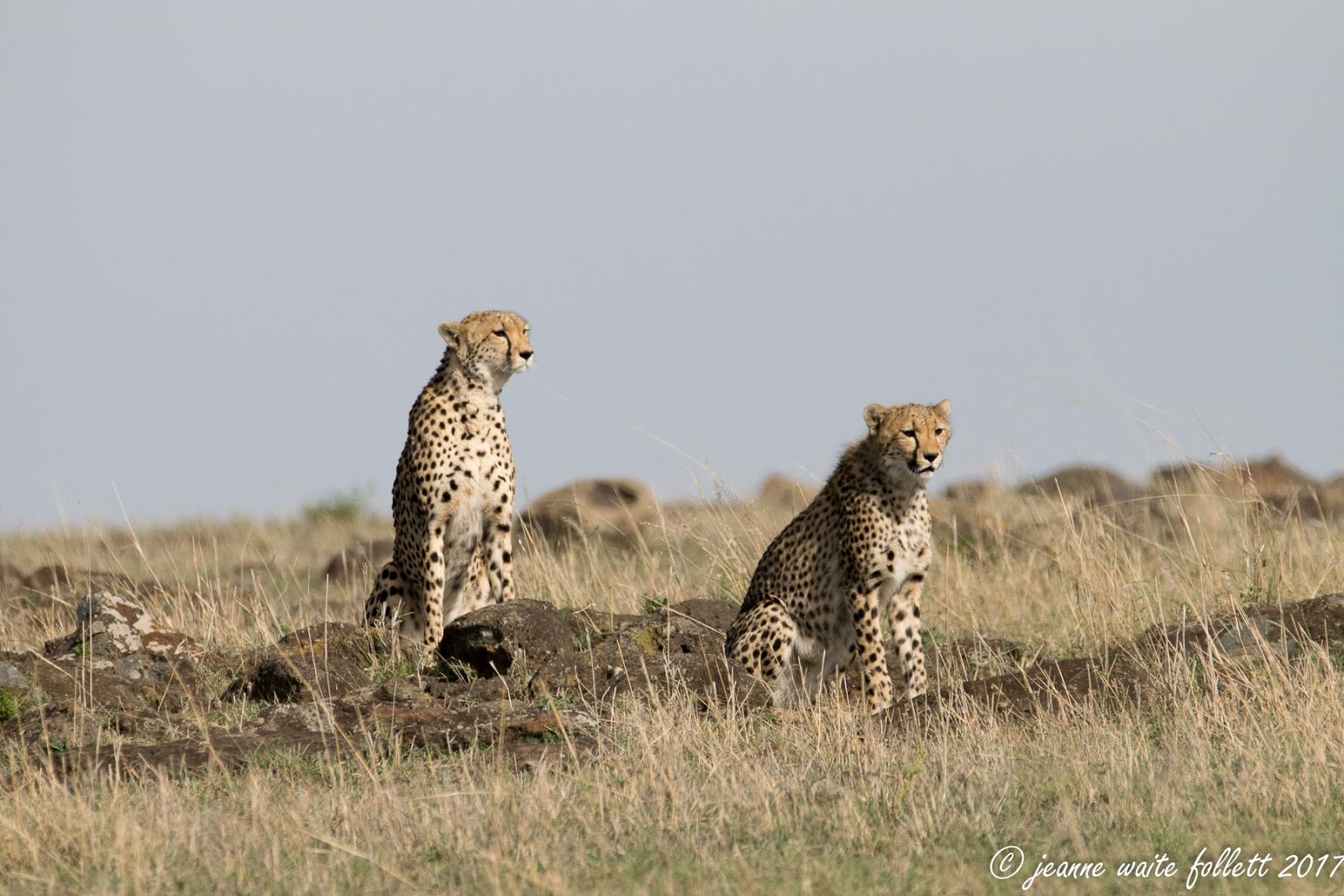Chapter Sixteen:
Cheetahs
on the Masai Mara
Long ago, a lazy hunter stole three cheetah cubs, thinking the three
cheetahs would hunt for him when they were grown.
When their mother found her babies gone, she was broken-hearted
and cried and cried until her tears made dark stains down her cheeks. She cried
so loudly that she was heard by an old man who came to see what the noise was
all about.
When he discovered what the wicked hunter had done, he became very
angry. The lazy hunter was not only a thief, but he brought dishonor to the
tribe, because a hunter must use only his own strength and skill.
The old man told the elders what had happened. The villagers
became angry and they drove the lazy hunter from the village. The old man took
the three cheetah cubs back to their grateful mother. But the long weeping of
the mother cheetah stained her face forever. Today the cheetah wears the
tear stains on its face as a reminder to the hunters that it is not honorable to
hunt in any other way than that which is traditional.
Moses
drives to cheetah country—wide open grassland with lots of room to run. And chase.
And
there she is, the cheetah known as Amani, the one with the two ten-month-old
cubs whose youthful energy and uncontrolled instincts to chase any moving
object often ruins her hunts.
 |
| A cub. |
 |
| Amani and cub. |
 |
| Though likely safe from the cheetahs, these ostrich keep watch. |
 | |
| Amani. |
 | |
| Amani and cubs. Note the watchful topi in the background. Usually, topi are too difficult for cheetahs to take down. |
As
with most of the animals on the Mara, these cheetahs are habituated to the
presence of safari vehicles and often use them for their own purposes, with
shade being predominant.
 |
| A cub rests briefly in the shade of a safari vehicle. |
Somewhere
on the Mara there is a cheetah called Malaika.
She is notorious for the ultimate use of safari vehicles, as she took to
jumping on them and using them for a viewing platform. While that makes for delightful photos, it is
dangerous to the passengers and the cheetah.
Now,
photos of cheetahs on vehicles are frowned upon in the photographic world, and
guides who allow the animal to get on the vehicle are fined.
Amani,
thankfully, has no such bad habits. She
has her paws full with her boisterous cubs.
The female will likely stay with her until she is about two years old;
the male until 16 months, unless another male runs him off. I am assuming, because of the difference in
their sizes, that one is male and one is female, but I don’t know for sure.
 |
| The two cubs are easily identified as immature by the scruffy hair on the back of their necks. It is called a mantle and is thought to help camouflage youthful cubs. |
Today
Amani is searching for pray, but the herds are too far away for
stalking.
By
now, the sun is high overhead, making for harsh light for the photographers. The shadows of the
cats are right underneath them and the sun is hot.
They
head for shade.
 |
| Amani |
The
cubs find a black plastic bag on the savannah and when the slight breeze moves
it, one cheetah grabs it for a plaything.
 |
| The shadow at right is a vertical support on the safari vehicle. That's how close the cheetah is. |
One
thing leads to another, and it’s full-on playtime on the Mara.
When
we leave them to return to camp for our afternoon break, the cheetahs are
sacked out under a shade tree, where they will likely remain until evening.
 |
| Amani |
 |
| Amani |
 |
| Amani |
 | |
| A cub. |

















Wow, fantastic photo's, Jeanne. That new lens that you have has been a worthwhile investment.
ReplyDeleteLove the story about the hunter and the cheeta tears. Amani is ELEGANT! Hugs. Patti and Cap (about to hit the road again out of Flagstaff)
ReplyDelete